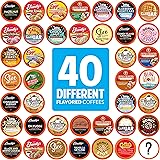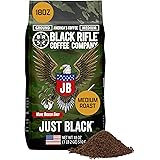Mastering Your Brew: Unpacking Espresso Ratios vs. Espresso Recipes
As discussed in the insightful video above, the world of home espresso brewing can often feel like a labyrinth of conflicting advice. A common point of confusion for many aspiring baristas revolves around the terms “espresso ratios” and “espresso recipes.” While often used interchangeably, these concepts represent distinct elements crucial for achieving that perfect shot. This article delves deeper into this essential distinction, offering a comprehensive guide to understanding both, and more importantly, how to apply this knowledge to consistently brew exceptional espresso at home.
The journey to excellent espresso is not merely about hitting a specific number; it is about understanding the intricate dance of variables that influence flavor. By clarifying the roles of ratios and recipes, you can move beyond simple instructions and gain the confidence to truly dial in your coffee, transforming your brewing process from guesswork into an art.
What Exactly Are Espresso Ratios? A Historical Perspective
An espresso ratio is a fundamental concept that describes the relationship between the weight of your dry ground coffee (dose) and the liquid weight of the extracted espresso in your cup. For instance, if 18 grams of coffee are used to produce 36 grams of liquid espresso, this is defined as a two-to-one (1:2) ratio. This straightforward measurement offers a quantifiable way to discuss and compare different espresso styles.
The systematic use of brewing ratios emerged around 2007, significantly influenced by pioneering work on platforms like the Home Barista forum, with notable contributions from individuals such as Andy Schecter. This period marked a crucial transition within the specialty coffee community: a shift from measuring espresso by volume to measuring by weight. Early observations, such as the surprising discrepancy between the perceived volume and actual weight of a crema-rich shot, highlighted the importance of precise liquid weight.
The advent of refractometers further accelerated this shift, allowing for a more scientific understanding of total dissolved solids (TDS) in espresso. With the ability to measure TDS, the significance of maintaining consistent brewing ratios became even clearer, linking these abstract figures to the actual strength and taste profile of the espresso.
Ratios as Definitions: Ristretto, Espresso, and Lungo
Historically, ratios served as useful, albeit abstract, definitions for various espresso styles. These definitions provided a common language for baristas:
- A **Ristretto** was typically understood to be a shorter shot, often with a ratio of 1:1 to 1:1.5. A well-extracted ristretto could yield a dissolved solids percentage of around 13-14%, indicating a very concentrated brew.
- A classic **Espresso** was commonly defined by a 1:2 ratio. When brewed optimally, this would result in a dissolved solids percentage closer to 10%, offering a balanced strength and flavor.
- A **Lungo**, meaning “long,” involved a higher ratio, such as 1:3. These longer extractions tend to have a lower dissolved solids percentage, usually ranging from 6-8%, producing a lighter-bodied, often more dilute taste.
While these ratios offered a starting point for understanding strength and concentration, it became increasingly apparent that they were merely indicators, not prescriptive instructions for a delicious shot.
The Misleading Simplicity of Ratios Alone
In recent times, a concerning trend has emerged where roasters and coffee professionals provide brewing guidance almost exclusively through simple ratios, such as “brew at a 1:2 ratio.” While this might seem helpful on the surface, it often oversimplifies the complex process of espresso extraction. Stating “brew at 1:2” effectively communicates “make espresso,” differentiating it from a ristretto or lungo. However, this seemingly precise instruction can be misleading because it implies that any dose-to-yield combination that equals 1:2 (e.g., 18g in/36g out, 20g in/40g out, or 22g in/44g out) will yield the same result. This simply is not the case.
Although these different dose-to-yield combinations might theoretically achieve the same strength if extracted perfectly, the real-world conditions of espresso brewing introduce too many variables for such an assumption. A higher dose, for example, might require a coarser grind to prevent channeling and over-extraction, while a lower dose might need a finer grind to ensure adequate contact time and extraction. A single ratio, therefore, cannot account for the vast spectrum of factors that influence a successful extraction. Its convenience often overshadows its practical limitations, leaving home baristas with inconsistent results despite following the “rule.”
Beyond Ratios: The Complex Matrix of an Espresso Recipe
To truly master espresso brewing, one must look beyond the isolated ratio and embrace the holistic concept of an **espresso recipe**. A recipe encompasses a complete set of parameters that dictate how a specific coffee should be brewed. This includes the dose, yield (which defines the ratio), brew time, temperature, and grind size, all tailored to the unique characteristics of the coffee and the brewing setup. The nuances of a recipe are significantly impacted by a wide array of factors, forming a complex matrix:
Equipment Considerations:
- **Espresso Machine Quality:** The stability of water temperature and pressure delivered by your machine plays a critical role. High-end machines offer greater consistency, while entry-level machines may require more compensation in other recipe parameters.
- **Grinder Quality:** A good quality grinder is paramount. It ensures a consistent particle size distribution, which is vital for even extraction. Cheap grinders produce uneven grinds, leading to both under-extracted and over-extracted flavors in the same shot.
- **Basket Size and Quality:** The design and capacity of your portafilter basket influence how much coffee can be dosed and how water flows through the coffee bed.
- **Brewing Water Quality:** Water composition (mineral content, pH) directly affects how flavors are extracted from the coffee grounds. Too soft or too hard water can lead to dull or overly acidic shots.
Coffee Characteristics:
- **Roast Level:** Lighter roasts are often denser and more difficult to extract, typically requiring finer grinds and higher temperatures. Darker roasts are more soluble and may extract too quickly, needing coarser grinds or lower temperatures.
- **Altitude and Density:** Coffees grown at higher altitudes tend to be denser, making them harder to extract. This density can influence the grind size and dose required.
- **Post-Harvest Process:** Whether coffee is washed, natural, or honey-processed affects its chemical composition and solubility, thus impacting how it should be brewed. For instance, naturally processed coffees often extract faster and can handle slightly coarser grinds.
- **Age of Coffee:** Freshly roasted coffee (typically 7-21 days post-roast) is ideal. Older coffee loses CO2 and changes extraction characteristics, often requiring adjustments to the grind or dose.
Each of these elements interacts with the others, meaning a slight change in one factor necessitates adjustments elsewhere in the recipe. Simply aiming for a 1:2 ratio without considering these underlying variables can lead to frustratingly inconsistent results.
Dosing Decisions: Your Starting Point for Great Espresso
One of the most impactful starting points in any espresso recipe is the dose – the amount of ground coffee used. The video highlights that prescriptive guidance on starting dose is often overlooked, yet it is arguably the easiest and most crucial variable to establish first. Once a starting dose is determined, the ending weight (yield) can be adjusted to achieve the desired ratio and, more importantly, the desired taste.
For most home baristas seeking a truly great-tasting shot, starting with a lower dose is often recommended, especially for coffees that are high-grown or light-roasted. A lower dose (e.g., 16 grams) can be easier to extract evenly with less sophisticated equipment, reducing the risk of channeling and bitterness. If a larger volume of liquid espresso is needed, perhaps for a milk-based drink, a higher dose might be justified, but always with an understanding of how it impacts extraction.
The typical brewing time for espresso generally falls within the 25 to 35-second range, assuming no complex pre-infusion settings are being used. This timeframe, alongside the dose, provides a foundational framework for dialing in your espresso. Experimentation within these parameters, guided by taste, is key. Whether your final shot weighs 30 grams, 32 grams, or 34 grams, the exact liquid weight is less important than the quality of the extraction. The enjoyment, aftertaste, and overall delightfulness of your espresso are primarily determined by how well the soluble solids were extracted from the coffee grounds.
The Art of Dialing In: Experimentation is Key
Given the multitude of variables at play, it becomes clear that a ratio alone cannot serve as a definitive recipe. Instead, ratios should be viewed as flexible starting points, and any given “recipe” as merely initial guidance. The true art of espresso brewing lies in the iterative process of “dialing in” your espresso. This involves making small, calculated adjustments to your recipe parameters, primarily grind size, dose, and yield, and then tasting the results.
For instance, if you begin with a 16-gram dose aiming for a 1:2 ratio (32 grams out), and the shot is sour and extracts too quickly, you would typically adjust your grinder to a finer setting. Conversely, if the shot is bitter, extracts too slowly, and tastes astringent, a coarser grind would be needed. Resources like the Barista Hustle chart, mentioned in the video, provide excellent visual aids for navigating these adjustments based on taste and extraction time.
Every coffee, every roast, and every brewing setup is unique. What works perfectly for one bag of beans might not for another, even from the same roaster. Your brew water, grinder, and machine all demand a personalized approach. Embracing this variability and being willing to experiment is essential for consistently pulling outstanding espresso shots.
Why Specificity Matters (And Sometimes Doesn’t)
There is a definite audience that desires simple, prescriptive answers for espresso brewing. They have invested in quality coffee and equipment and simply want to get to “good quickly.” While this desire is understandable, providing overly specific, yet still fundamentally limited, instructions (e.g., “brew at 1:2.255369”) can be a disservice. Such specificity creates an illusion of precision without conveying the underlying rationale or acknowledging the necessary flexibility.
Instead, the focus should be on understanding the principles behind extraction and how various factors influence taste. For instance, when brewing very high-grown coffees, it is often beneficial to use a slightly lower dose to prevent over-extraction, allowing their delicate flavors to shine. In contrast, certain low-grown coffees, like a great estate Brazil, might handle a higher dose and a classic 1:2 ratio well, producing a rich, textural experience.
The industry, including roasters and barista trainers, has a responsibility to communicate better. Merely providing an espresso ratio, however precise it may appear, offers limited actionable information. It overlooks the crucial interplay of equipment, coffee characteristics, and the individual’s brewing environment. True guidance should equip baristas with the knowledge to adapt, troubleshoot, and refine their approach, rather than blindly following a number.
Ultimately, a perfect espresso shot is not dictated by a single, unwavering number, but by a holistic understanding of the brewing process. It is about understanding that not all 1:2 ratios are created equal and that mere adherence to a ratio does not guarantee the roaster’s intended flavor profile. This continuous learning and adaptation are what transform a simple coffee preparation into a truly rewarding experience, paving the way for a deeper connection with your espresso.







